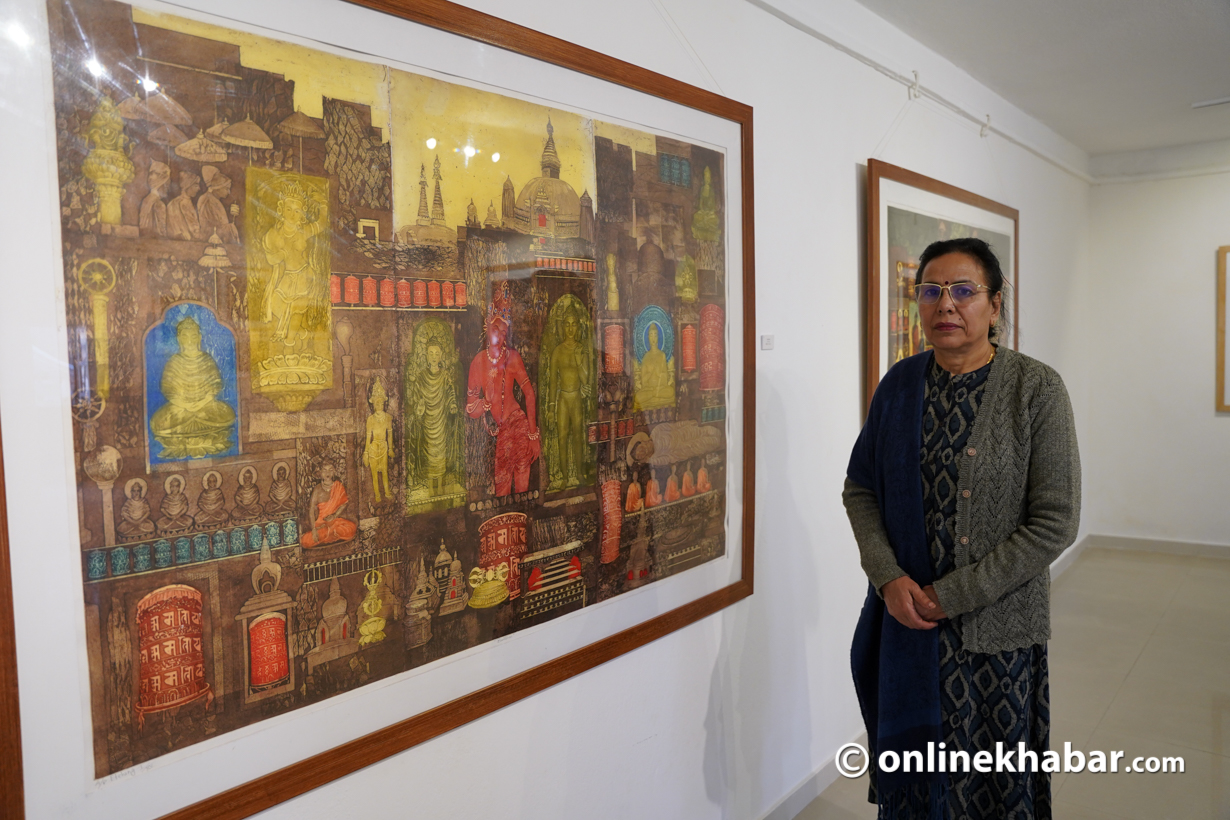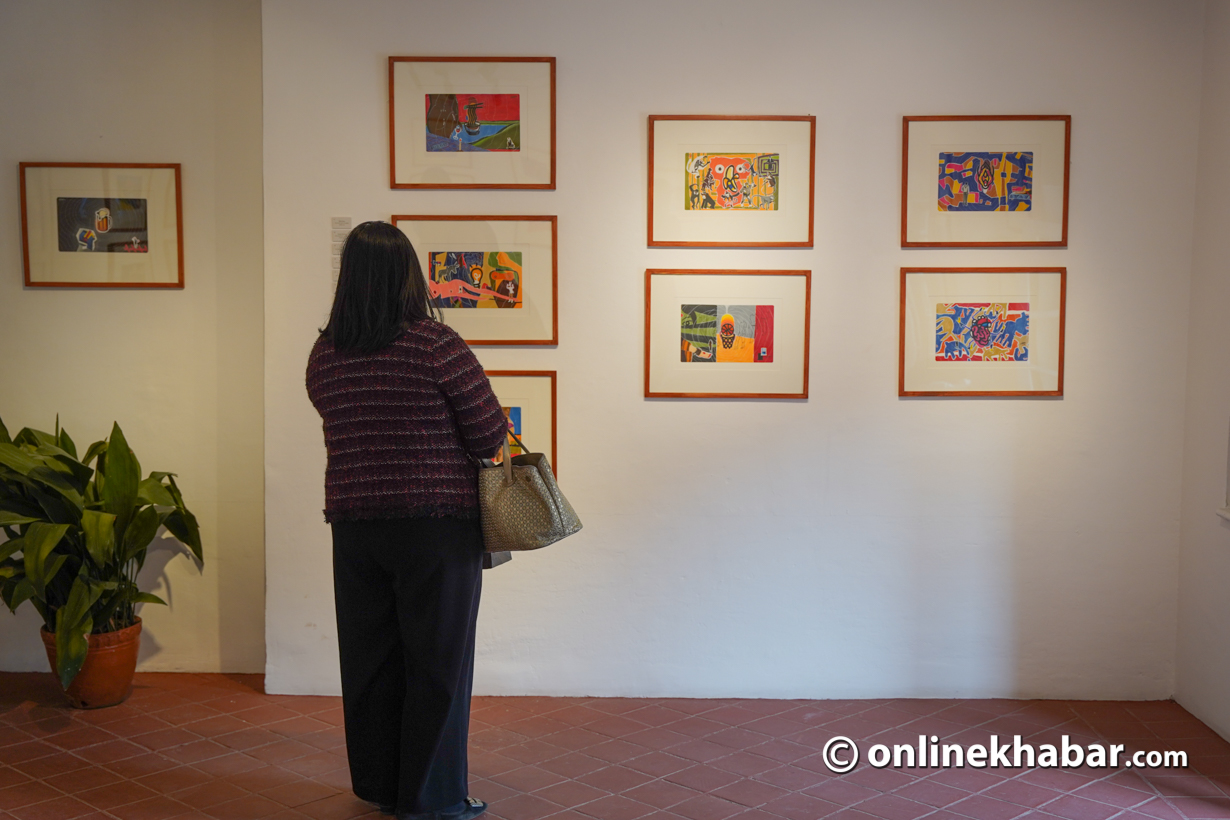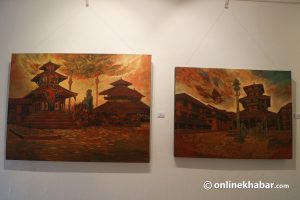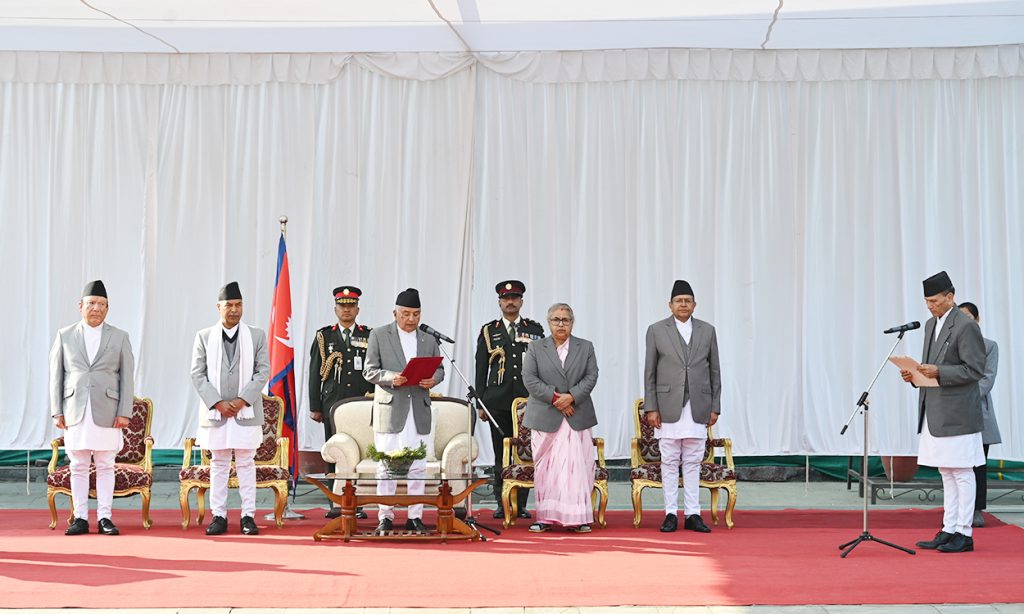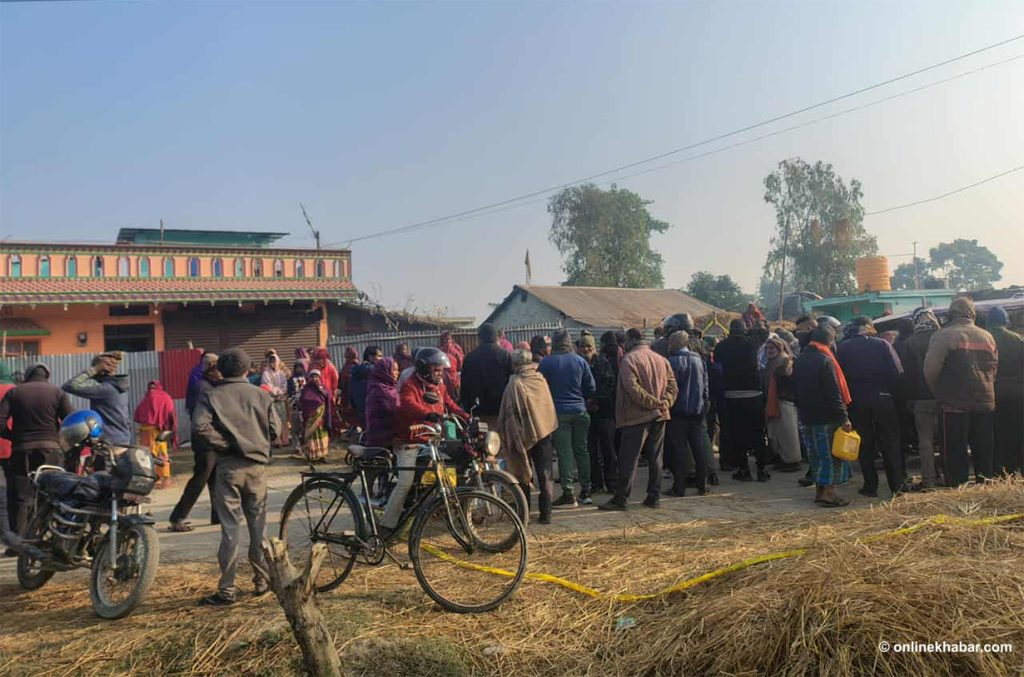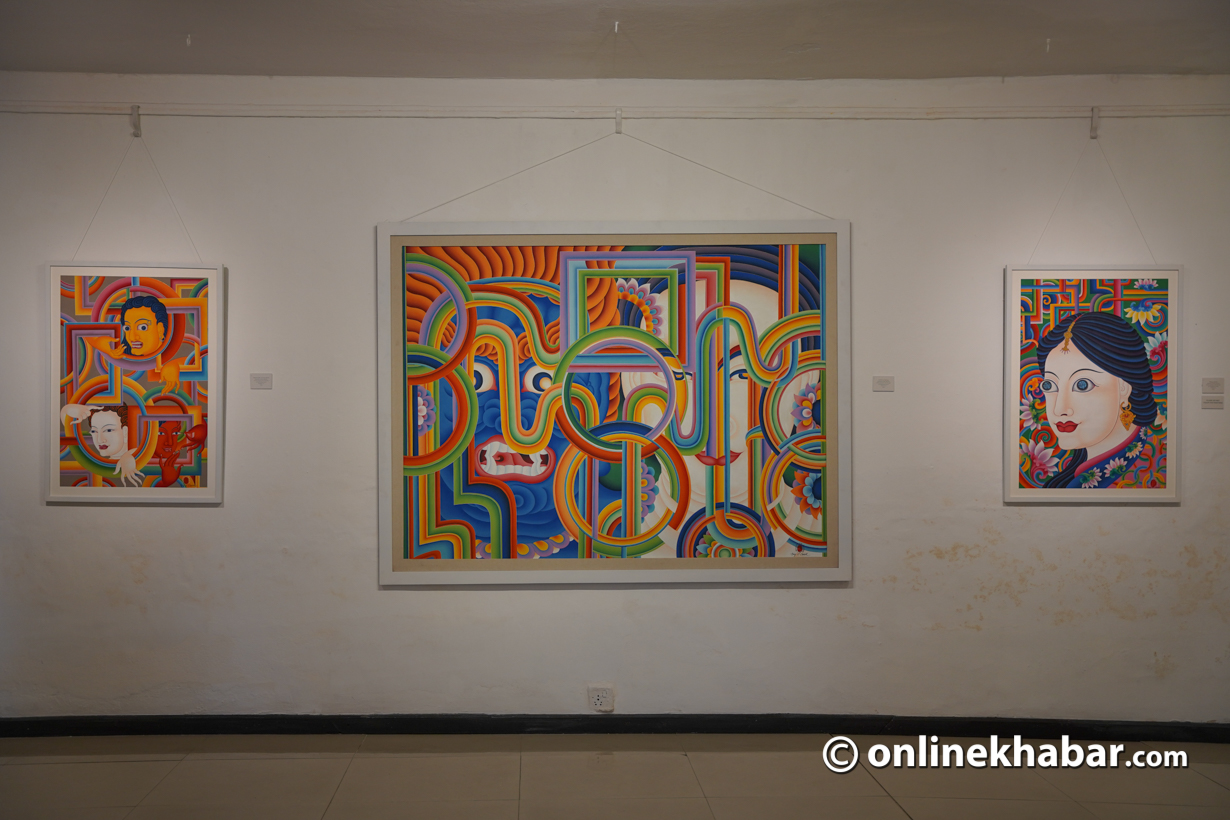
Anay Ngawang Chodak‘s solo painting exhibition, titled ‘Compassion and Wisdom in a Contemporary World,’ being held at Siddhartha Art Gallery in Babermahal from November 22, exudes a profound sense of renewal, hope, and a joyous atmosphere.
The vibrant colours used in Anay Ngawang Chodak’s painting intertwined with spirituality and symbolic cultural representation help the viewers connect with his reflection on life and spirituality. In his art, viewers can see the merge of his heritage and modernity.
In the exhibition
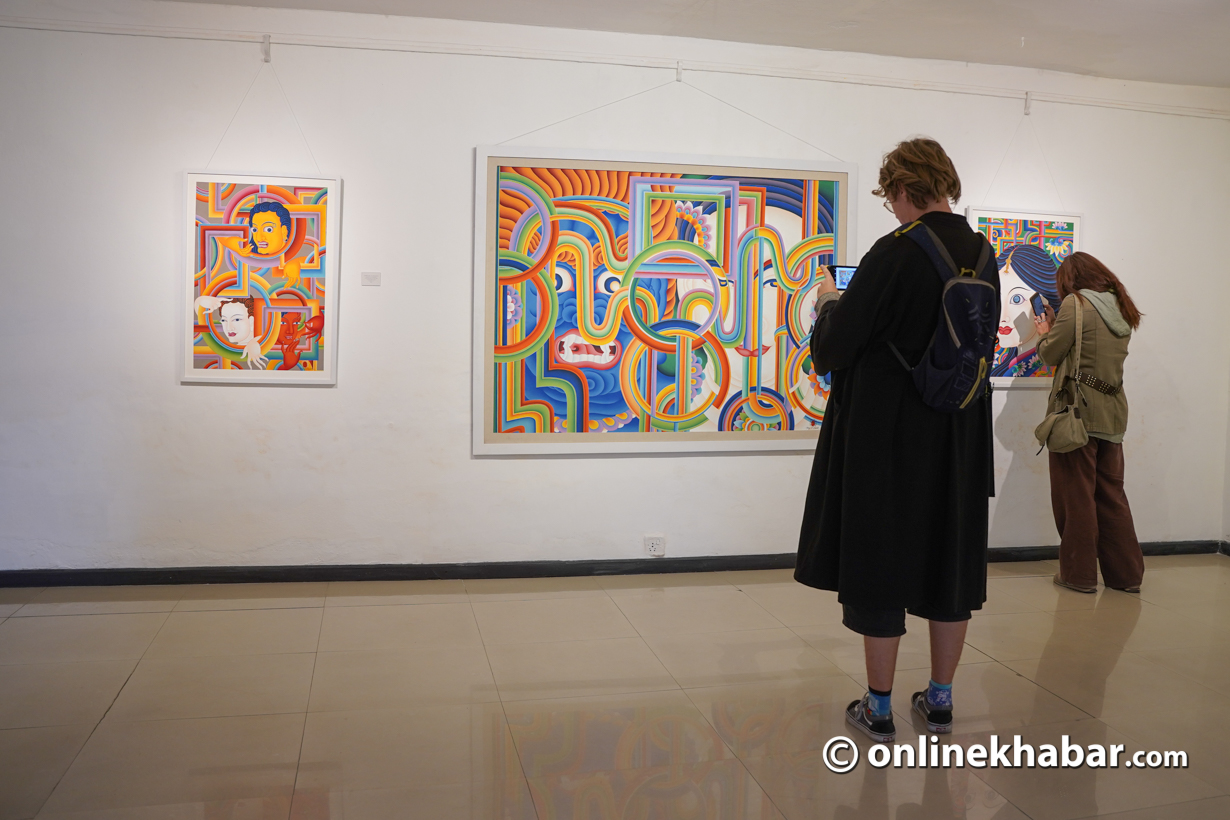
Ngawang Chodak is a devoted Buddhist practitioner and a direct descendant of Repa Dorje Chang (one of the Jetsun Milarepa’s disciples) lineage. He is a Tibetan traditional thangka master and contemporary artist.
As such, Ngawang Chodak paintings are a fusion of different style forms such as Newa Paubha art, Kashmir’s Alchi art and Tibetan art and with a core philosophy of female energy as a divine source of wisdom. Director of Siddhartha Art Gallery, Sangeeta Thapa says that Ngawang Chodak’s artistic journey is a testament to his dedication to preserving and advancing Tibetan art traditions.
“His work not only reflects technical brilliance but also a profound spiritual connection that resonates through each stroke of his brush, which has contributions to the world of art and culture,” says Thapa.
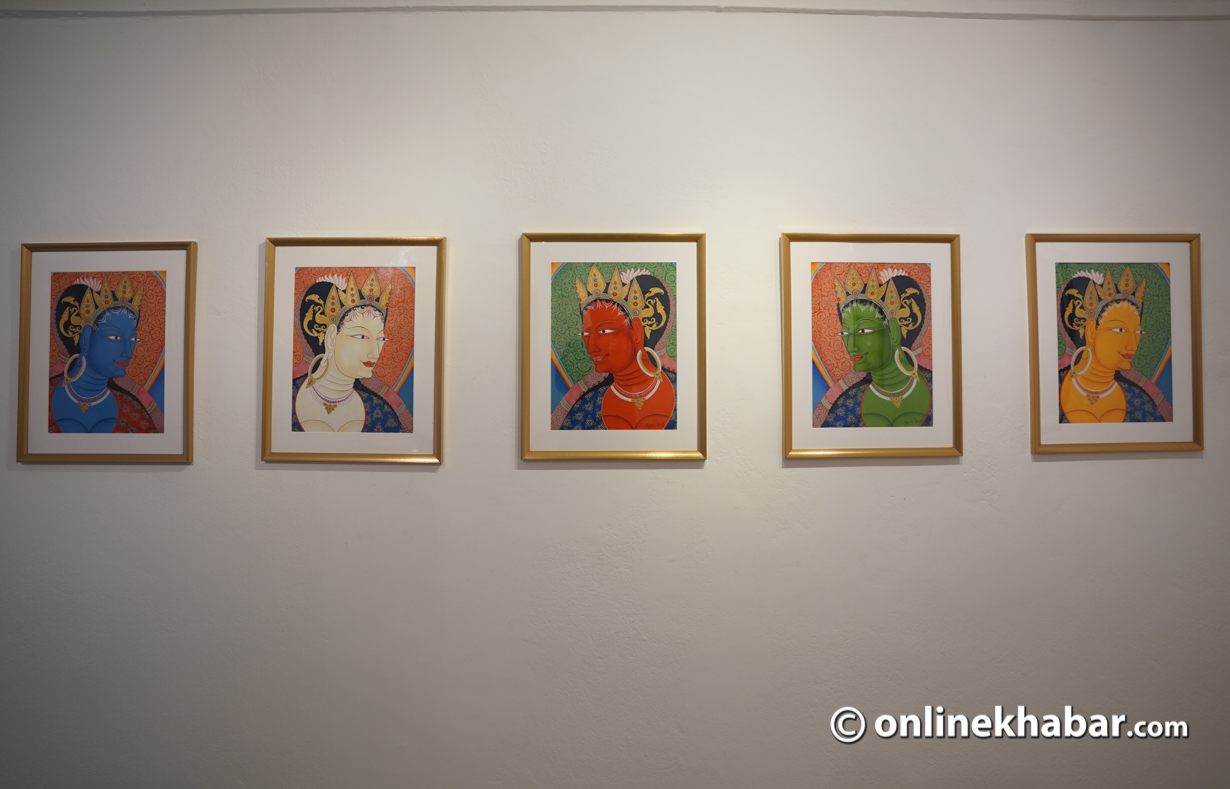
The colours he has used in his paintings and the geometric shapes are evidence that the artist has been influenced by his cultural heritage. The colours of Pangdey, a multi-coloured, striped Tibetan apron worn mostly by married women, come alive in his paintings. Along with that, Thangka’s intricate details and colours have also found their place in harmony with his concept in the paintings.
In the exhibition, viewers can see the expression of accepting both masculine and feminine aspects of a human being along with the quality of light and dark that helps to create balance in life.

Moreover, the use of pastel colours and the concepts in his composition using motifs from Tibetan Thangka give Ngawang Chodak’s paintings a modern touch, which denotes the appreciation of contemporary time and the unlimited horizon of art to explore. Meanwhile, it also symbolises his homage to the feminine wisdom, compassion and power that she holds in her.
Creating masterpieces
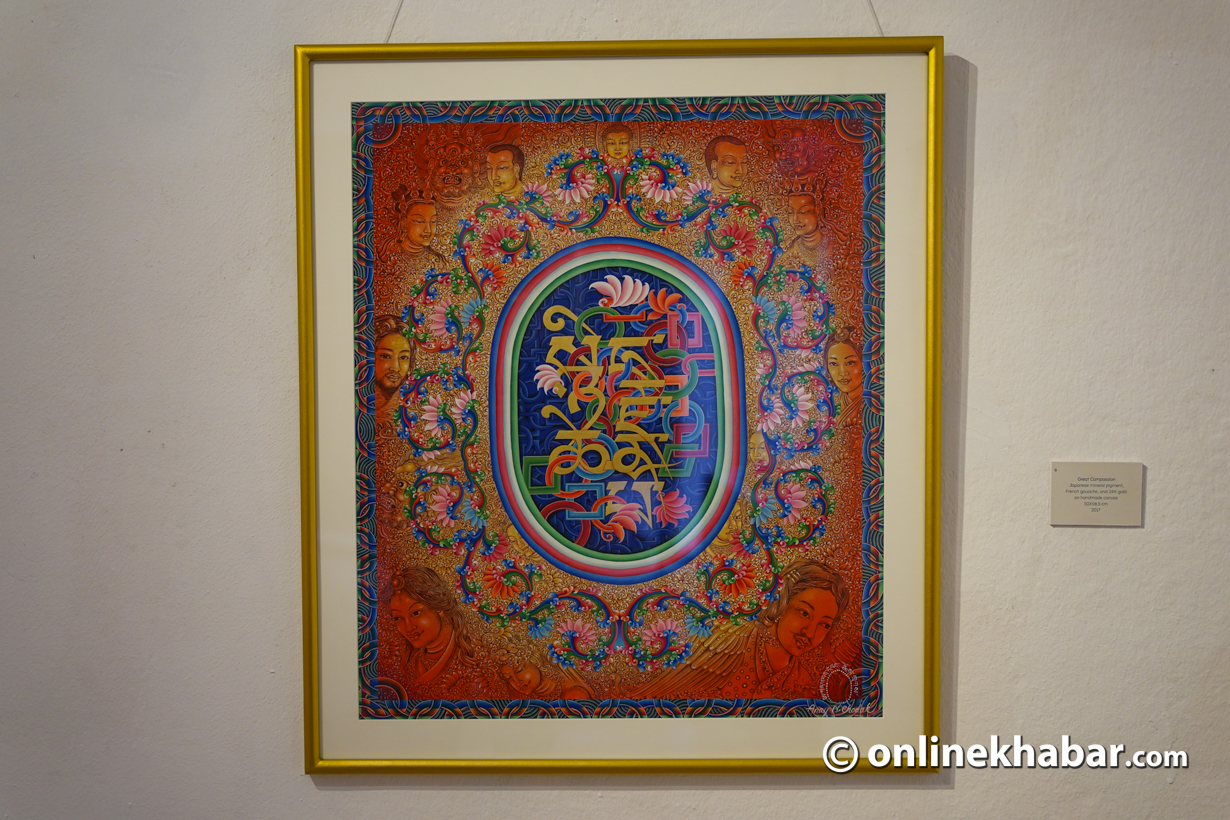
Using Japanese mineral pigment, French gouache and 24K gold on handmade canvas, he has created the painting Great Compassion which looks like a mandala from afar. When you examine the painting, you will see many intricate details in it.
He has used hues like blue, red, white, green, brown and yellow. The first layer is a rectangular border with half-circular shapes and the portraits of Tibetan men, women, monks, bodhisattvas and Buddha form the second layer in the painting. The third layer is a flowery border in a circular shape and the fourth layer is a stripy border. Inside it, he painted Tibetan prayer letters intertwined with each other and decorated with lotus.
The painting’s composition is detailed and there is not any negative space on the canvas. Even without any negative space in the composition, all the motifs fit together in harmony.
The exhibition marks the end of Siddhartha Art Gallery’s exhibition for 2023, which continues till December 22.




